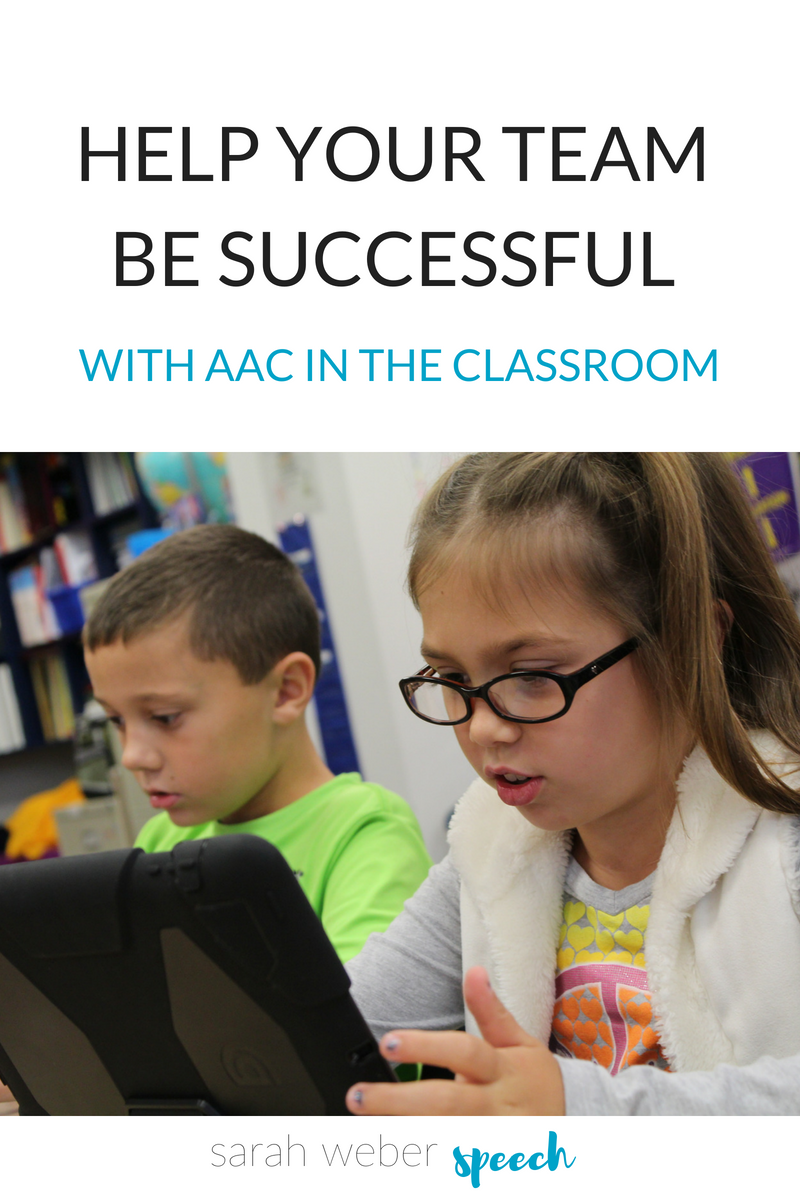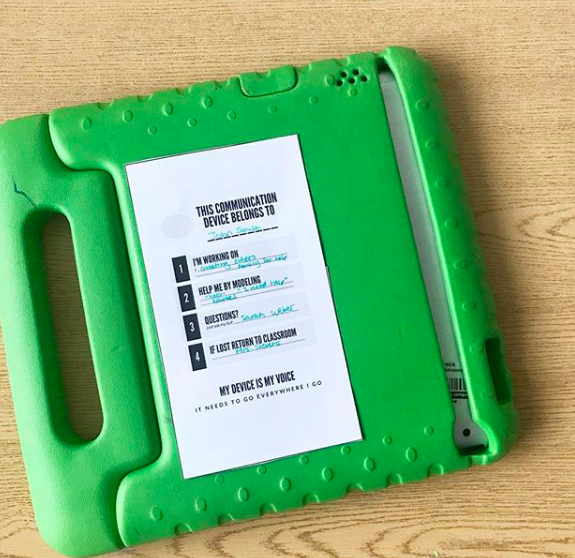Help Your Team to Succeed with AAC in the Classroom
by Sarah Weber
If you work with a school-aged AAC user chances are you're always looking to support their communication.
As a school-based SLP one of the most important things I can do is make sure my student's team feels confident with their device in EVERY educational setting. Speech therapy sessions are important but therapy CAN'T be the only place a student's device is used. Research shows that students participating in 40-60 minutes of speech therapy per week will need 84 years to reach the same level of language exposure as an average 18 month-old child (Jane Kornsten).
The easiest way to make sure that AAC is being used in the classroom is to make it easy to use! These tips will help you make sure your user's educational team is comfortable and confident using their device in the classroom.

Make the device accessible
Help your team keep the device in front of the student at all times. If they can’t reach it or see it, they won’t be able to use it. Devices should never be placed on shelves or tucked into backpacks. Make sure your team has devices in sturdy cases with carrying straps or stands so they can help their user take their device everywhere.
Have low tech AAC in the classroom
Technology breaks! When this happens the student will need a back-up. Give your team low tech (paper-based) communication aids so when the device goes down communication doesn't. Take screenshots of page sets and print off communication boards to keep in the classroom. That way the student will still have a voice during technical hiccups. Low tech systems are also a safe alternative for students during challenging behaviors to ensure they don't hurt themselves or their device.
Set small goals
There's a lot to do with AAC in the classroom throughout the day and too many options lead to analysis paralysis. Working on 1-2 things in support of a bigger goal (e.g. using the device to say ‘hello’ to the teacher as part of a bigger social goal) gives everyone specific ways to support the AAC user. Breaking the goal down into specific steps empowers your team to help your user reach their goals faster.
Vary your functions
We communicate for a wide variety of reasons. We ask for things and comment on what's happening. We give our opinion and have a chat. Helping your team support a variety of AAC functions in the classroom expands your user's world, making communication more natural. Start your team using the device to control the environment with words such as ‘stop’, ‘go’, ‘more’, ‘help’ and then move to words for commenting such as ‘good’, ‘yuck’, or 'fun'. Soon enough your team will feel comfortable sitting with your aac user asking questions and having a chat.
Wait, wait, wait, wait, wait
And then wait some more. Coun to 10 in your head before offering a prompt or modeling. Even for fluent AAC users, a communication device is much slower than verbal speech. When you wait you give your student time to respond. When you wait your student knows you expect something from them. When you wait you never know what might happen. It’s one of the most powerful things you can do.

An easy way to set your team up for success is to provide visual reminders of all of the above strategies.
I give my team these cheat sheets to help them increase their use of AAC in the classroom. Feel free to download and fill them out for your students to help your team start the year off right.
